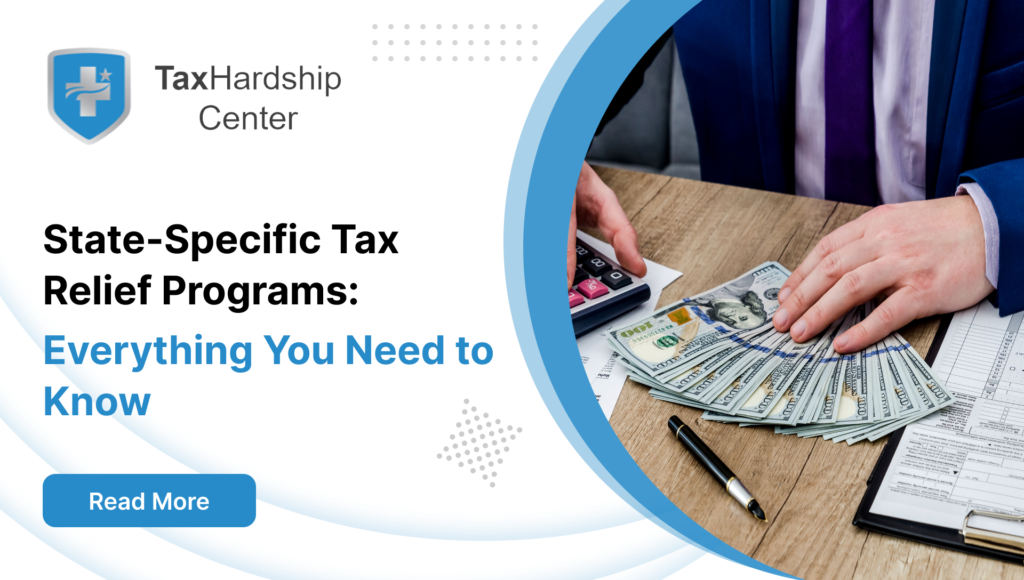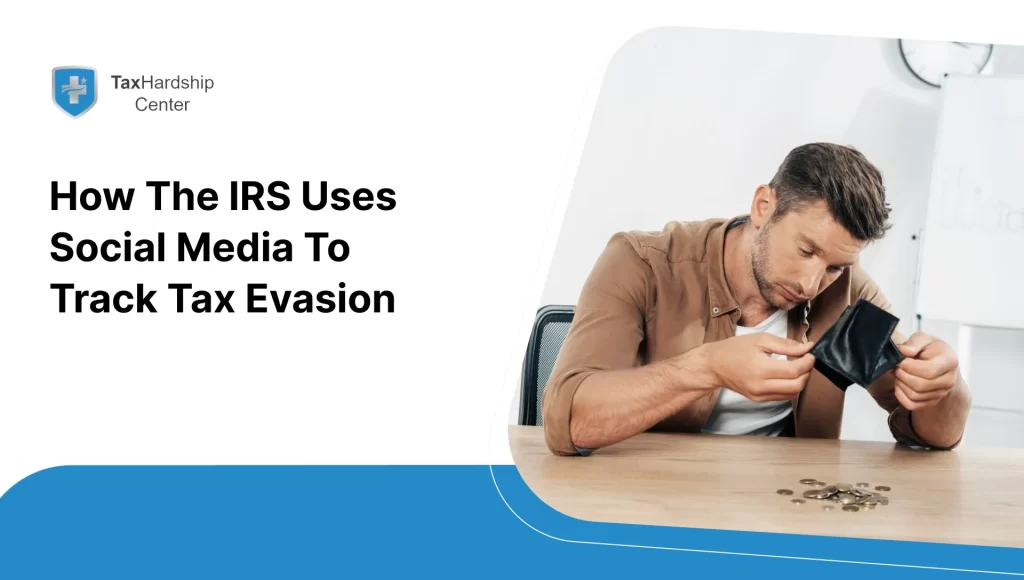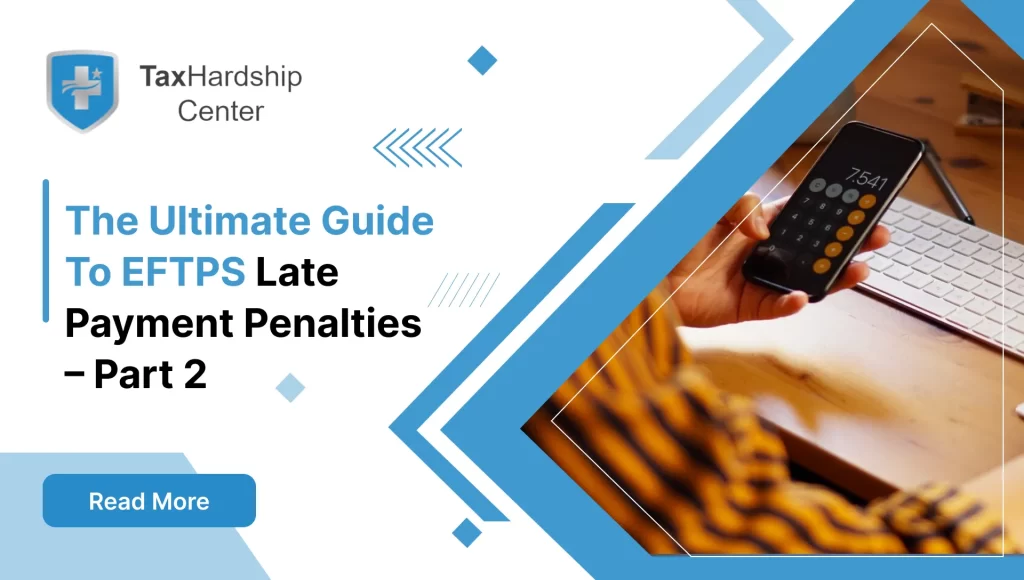Tax season often brings stress and financial pressure for many Americans. However, understanding state-specific tax relief programs can significantly ease this burden. Each state offers unique opportunities for tax relief that can lead to substantial savings. Knowing the array of benefits available, from property tax exemptions to sales tax holidays, can make a considerable difference in your financial planning. This article aims to shed light on these programs, how they differ from federal tax relief options, and why taxpayers must familiarize themselves with them.
Overview of State-Specific Tax Relief Programs
What Are State-Specific Tax Relief Programs?
State-specific tax relief programs are initiatives designed by state governments to reduce the tax burden on their residents. These programs can differ widely between states in nature and scope. While the federal government provides tax relief options like Earned Income Tax Credits and various deductions, state programs are tailored to meet regional needs and priorities.
Common Types of State Tax Relief Programs
State tax relief programs come in various forms. Here are some common types:
Property Tax Exemptions:
- California: Offers property tax postponement for senior citizens and disabled individuals.
- New York: Provides the School Tax Relief (STAR) program for eligible homeowners.
Income Tax Credits:
- Earned Income Tax Credit (EITC): Many states offer their versions of the federal EITC.
- Colorado: Provides income tax credits to support residents with dependent care expenses.
Sales Tax Holidays:
- Florida: Holds back-to-school sales tax holidays, exempting certain items from sales tax for a limited period.
- Texas: Offers sales tax holidays for energy-efficient appliances.
By offering these varied programs, states aim to address their residents’ needs and economic conditions.
Tax Hardship Center: Your State Tax Relief Partner
Tax relief options such as property tax exemptions, income tax credits, and sales tax holidays are diverse in every state, causing confusion among taxpayers. Tax Hardship Center simplifies your tax journey and brings you peace of mind.
We specialize in untangling complex tax situations across various state-specific programs, including:
- Property Tax Strategies: Understanding and applying for exemptions can be confusing. Our experts ensure you comply with all relevant regulations and avoid unnecessary tax burdens.
- Income Tax Solutions: Claiming state-specific income tax credits adds another layer of complexity. We’ll guide you through the tax laws and ensure you optimize your tax situation.
- Audit Support: Facing a state tax audit can be stressful. We’ll provide expert assistance throughout the process, ensuring a smooth resolution.
- Sales Tax Planning: Participating in sales tax holidays involves unique considerations. We’ll help you develop a tax plan that minimizes your liabilities and maximizes exemptions.
- Negotiating with Tax Authorities: Need help communicating with state tax authorities regarding your tax relief applications? We can advocate on your behalf and negotiate a favorable outcome.
Don’t let state-specific taxes become a source of stress. Focus on what matters most – maximizing your financial benefits! We’ll handle the complexities of state tax relief programs.
Schedule a free consultation with the Tax Hardship Center today and breathe a sigh of tax relief!
Differences Between State and Federal Tax Relief
Key Differences to Note
Understanding the key differences between state and federal tax relief programs is essential for maximizing your tax savings. Here are some points to consider:
Eligibility Requirements:
- Federal programs often have broader eligibility criteria, while state programs can be more specific.
- For instance, the federal Earned Income Tax Credit applies nationwide, but states might add additional criteria or offer supplementary credits.
Application Processes:
- Federal tax relief typically involves filling out forms within the IRS tax return.
- State programs may require separate applications. For example, California’s property tax postponement demands a distinct application process.
Types of Relief Provided:
- Federal programs often focus on income tax credits and deductions.
- State programs can offer a broader range, including property tax exemptions and sales tax holidays.
How State Programs Complement Federal Relief
State tax relief programs can enhance the benefits provided by federal programs. For example:
Combining EITC:
Residents of California can benefit from both the federal EITC and the state-specific CalEITC, maximizing their tax refund.
Property Tax Relief:
In states like New York, homeowners can benefit from federal mortgage interest deductions and state programs like the STAR exemption.
By understanding how state tax relief can complement federal programs, taxpayers can develop a more comprehensive strategy for maximizing their savings. Consulting a tax professional can be invaluable in this regard.
State-Specific Examples
Case Study: California’s Tax Relief Programs
California offers a variety of tax relief programs tailored to its diverse population:
Property Tax Postponement:
California’s Property Tax Postponement program allows eligible seniors, blind, and disabled residents to defer their property taxes. This program is designed to provide immediate financial relief by postponing the payment of property taxes until the homeowner moves, sells the property, or passes away. This can significantly ease the financial burden for those living on fixed incomes.
Renters’ Credit:
The California Renters’ Credit is a valuable benefit for low-income renters. This program provides a tax credit that helps alleviate the financial burden of paying rent, which can be especially high in many parts of the state. By reducing the tax owed, this credit can help renters manage their overall living expenses more effectively.
California Earned Income Tax Credit (CalEITC):
The CalEITC supplements the federal Earned Income Tax Credit (EITC) by offering additional support to low-income working families. This state-specific credit can significantly increase the amount of money refunded to eligible taxpayers, providing crucial financial assistance to those who need it most. The CalEITC is designed to encourage work and support families striving to improve their finances.
Case Study: New York’s Tax Relief Options
New York has several noteworthy tax relief programs:
School Tax Relief (STAR) Program:
The STAR program offers exemptions on school property taxes for eligible homeowners in New York. There are two types of STAR benefits: Basic STAR and Enhanced STAR. Basic STAR is available to most homeowners whose income is below a certain threshold, while Enhanced STAR targets senior citizens with more stringent income limits. This program helps reduce the overall property tax burden, making homeownership more affordable.
Empire State Child Credit:
The Empire State Child Credit provides tax relief to families with children aged 4-16. This credit is designed to supplement federal child tax credits, offering additional financial support to middle and low-income families. By reducing the state tax owed, the Empire State Child Credit helps families manage the costs of raising children.
Real Property Tax Credit:
New York’s Real Property Tax Credit, also known as the Circuit Breaker Credit, helps low-income residents who pay high property taxes relative to their income. This credit is particularly beneficial for seniors and those with fixed or limited incomes, as it provides a refundable credit that can offset a significant portion of their property tax bill.
Other Noteworthy State Programs
States like Texas, Florida, and Illinois also offer unique tax relief opportunities:
Texas:
Texas provides a variety of property tax exemptions designed to assist veterans, seniors, and disabled individuals. These exemptions can significantly reduce the property tax owed, making homeownership more affordable for vulnerable populations. Additionally, Texas offers sales tax holidays for energy-efficient appliances, encouraging residents to invest in energy-saving products while enjoying tax savings.
Florida:
Florida’s Homestead Exemption can significantly reduce property taxes for primary residences. This exemption is available to homeowners who use the property as their primary residence and can lead to substantial tax savings. Additionally, Florida hosts annual sales tax holidays for back-to-school shopping, offering families relief on school supplies, clothing, and other essential items during specific periods.
Illinois:
Illinois offers a Homestead Improvement Exemption for homeowners who have improved their property. This exemption allows homeowners to exclude the added value from improvements (up to a certain amount) from their property tax assessment for a specified period. This can encourage property improvements and renovations without immediately increasing the tax burden.
Pennsylvania:
Pennsylvania offers a Property Tax/Rent Rebate Program that benefits eligible seniors, widows, widowers, and disabled individuals. This program provides rebates on property taxes or rent paid in the previous year, offering financial relief to those on fixed incomes. The rebate amount varies based on income, with higher rebates available to those with lower incomes.
Massachusetts:
Massachusetts has a Senior Circuit Breaker Tax Credit, which provides a refundable credit to eligible seniors whose property tax payments (including water and sewer charges) exceed 10% of their income. This program helps seniors manage high property taxes relative to their income, offering substantial financial relief.
Michigan:
Michigan’s Homestead Property Tax Credit is designed to assist low-income homeowners and renters. The credit is based on the property taxes or rent paid in the previous year and aims to reduce the tax burden for those with limited incomes. The credit amount varies, with larger credits available to those with lower incomes and higher property tax burdens.
Ohio:
Ohio offers a Homestead Exemption that reduces the property tax burden for eligible seniors and disabled homeowners. This exemption allows qualifying homeowners to shield a portion of their home’s value from property taxes, resulting in lower overall tax bills. The program is designed to make homeownership affordable for older and disabled residents.
These examples highlight the diverse range of tax relief options across different states. By understanding and utilizing these programs, taxpayers can significantly reduce their tax burden and improve their financial well-being.
How to Apply for State Tax Relief
Steps to Apply for State Tax Relief
Applying for state-specific tax relief requires careful planning and organization. Here are general steps to follow:
Research Eligibility:
Understand the specific eligibility criteria for the tax relief programs in your state.
Gather Documentation:
Collect necessary documents such as income statements, property tax bills, and proof of residency.
Complete Applications:
Please complete the required application forms accurately. Some states allow for online submissions, while others may require paper forms.
Meet Deadlines:
Be mindful of application deadlines to ensure you take advantage of valuable tax relief.
Common Pitfalls and How to Avoid Them
Several common mistakes can derail your tax relief application:
Incomplete Applications:
Ensure all application sections are filled out, and all required documents are attached.
Missing Deadlines:
Note all relevant deadlines and set reminders to avoid late submissions.
Misunderstanding Eligibility:
Double-check eligibility criteria to ensure you qualify for the program you’re applying for.
By avoiding these pitfalls and following the correct procedures, you can improve your chances of obtaining state tax relief successfully.
Maximizing Your Tax Relief Benefits
Strategies to Maximize State Tax Relief
To make the most of state-specific tax relief programs, consider these strategies:
Stay Informed:
Keep up-to-date with new and updated tax relief programs in your state. Subscribe to newsletters or follow state tax department updates.
Consult a Tax Professional:
A tax professional can provide tailored advice and help you navigate complex tax rules.
Leverage Multiple Programs:
Where eligible, take advantage of multiple tax relief programs, such as combining property tax exemptions with income tax credits.
Combining State and Federal Relief for Optimal Savings
Combining state and federal tax relief programs can result in significant savings. Here’s how:
Plan Ahead:
Early planning lets you identify which programs you qualify for and how to combine them best.
Professional Consultation:
Consulting with a tax professional can help you develop a comprehensive strategy utilizing state and federal relief options.
Record Keeping:
Keep detailed records of all tax-related documents. This will ensure you have all the necessary information when applying for multiple programs.
By strategically combining state and federal tax relief, you can maximize your tax savings and reduce your overall tax burden.
Conclusion
The landscape of state-specific tax relief programs brings potential benefits for taxpayers, but their complexity is worth it. Understanding the variety of programs available—from property tax exemptions to income tax credits—helps you make informed decisions that can significantly impact your financial health. Stay informed, seek professional advice, and take proactive steps to benefit from these programs. By doing so, you can achieve substantial tax savings and alleviate some financial pressures during tax season.
Why Tax Hardship Center?
1. Hassle-Free Assistance:
Say goodbye to sleepless nights and endless tax-related stress. At the Tax Hardship Center, we believe in simplifying the complex. Our team of experts is dedicated to guiding you through every step of the process, ensuring that your tax concerns are met with precision and care.
2. 14-Day Money Back Guarantee:
We’re so confident in our ability to ease your tax worries that we offer a 14-day money-back guarantee. If, for any reason, you’re not satisfied with our service, we’ll gladly refund your investment. Your peace of mind is our top priority!
3. Free Consultation:
Are you curious about how we can transform your tax experience? Book a free consultation now! Our team will assess your situation, answer your questions, and provide free insights tailored to your needs.
4. Nationwide Coverage:
No matter which corner of the United States you call home, the Tax Hardship Center covers you. We proudly serve all 50 states, bringing our expertise to your doorstep. Wherever you are, our commitment to excellence follows.
FAQs:
1. What are state-specific tax relief programs?
State-specific tax relief programs are initiatives designed by state governments to reduce the tax burden on their residents. These programs can include property tax exemptions, income tax credits, and sales tax holidays.
2. How do state tax relief programs differ from federal programs?
State tax relief programs are tailored to meet regional needs and can vary widely between states. Federal programs often have broader eligibility criteria and focus on income tax credits and deductions, while state programs may offer additional benefits like property tax exemptions and sales tax holidays.
3. What are some common types of state tax relief programs?
Common state tax relief programs include property tax exemptions, income tax credits, and sales tax holidays. California offers property tax postponement for seniors, while Florida has back-to-school sales tax holidays.
4. How can I apply for state-specific tax relief?
To apply for state-specific tax relief, you must research eligibility criteria, gather necessary documents, complete application forms, and meet all relevant deadlines. Each state may have different application processes and requirements.
5. What strategies can help maximize state tax relief benefits?
To maximize state tax relief benefits, stay informed about new and updated programs, consult a tax professional for tailored advice, and leverage multiple programs where eligible. Combining state and federal relief can also lead to significant savings.








